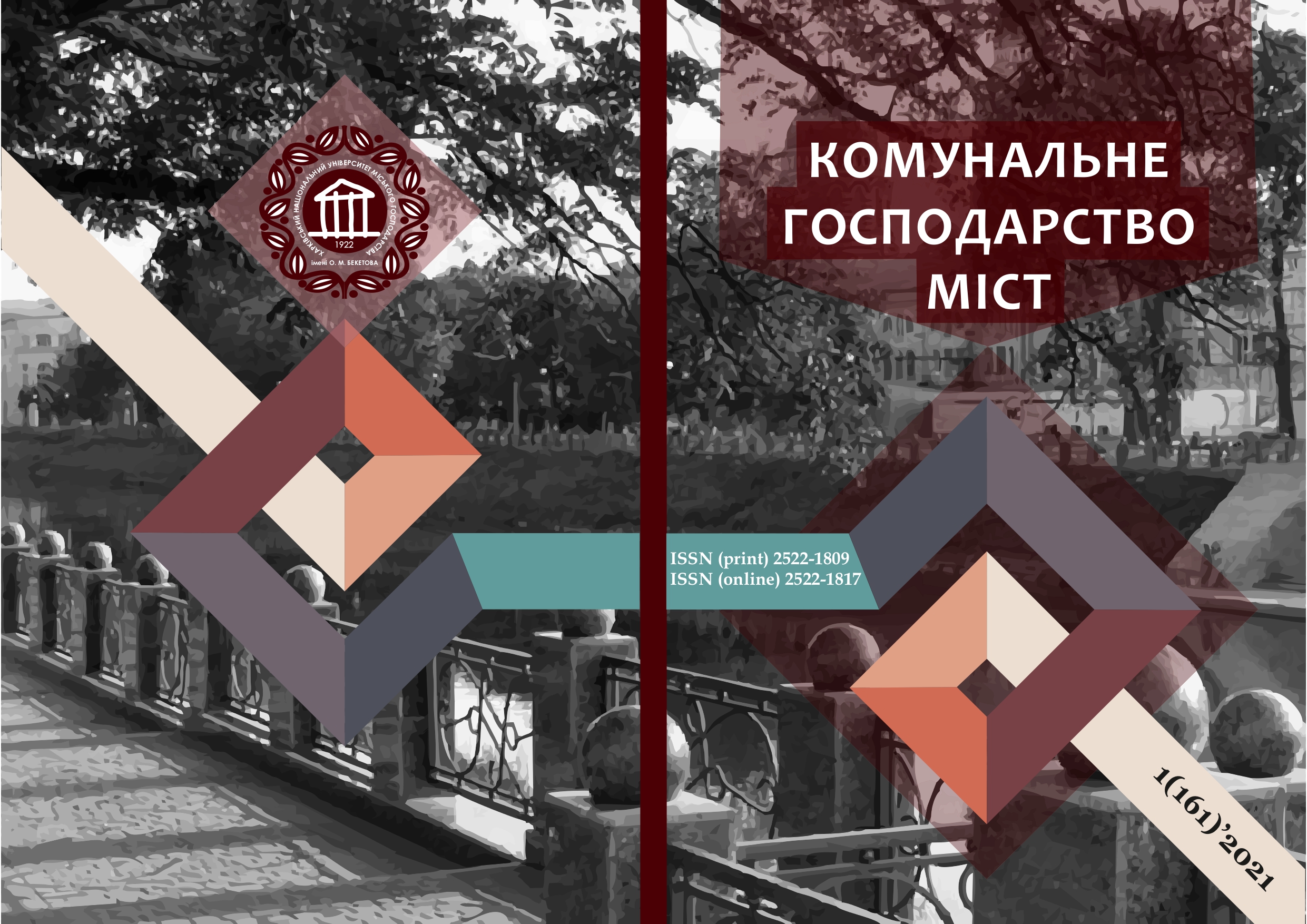ПРОЕКТУВАННЯ ЕКОЛОГІЧНО НЕБЕЗПЕЧНИХ ОБ’ЄКТІВ ЗАСОБАМИ ГЕОІНФОРМАЦІЙНИХ СИСТЕМ
Array
Ключові слова:
техногенний об’єкт, геоінформаційна система, геопросторові дані, база геоданих, санітарно-захисна зона, тривимірна модель.Анотація
У статті досліджується актуальна на сьогоднішній день проблема утилізації твердих побутових відходів та використання геоінформаційних технологій при проектуванні подібних екологічно небезпечних об’єктів. Детально описано послідовність дій у разі реконструкції земельної ділянки для побудови полігону твердих побутових відходів та наведено яким чином можна використовувати геоінформаційні системи для прискорення та найкращого виконання цього завдання.
Посилання
2. Saijt “Karta Ukrainy so sputnika”, www.obl-map.com.ua/848330
3. Saijt “Minprom. Informacionnoe agenstvo”, https://www.minprom.ua
4. Kontokosta, C. E., Hong, B., Johnson, N. E., & Starobin, D. (2018). Using machine learning and small area estimation to predict building-level municipal solid waste generation in
cities. Computers, Environment and Urban Systems, 70, 151– 162.
5. Pomortseva О.E., Pilicheva M.O., Anoprienko T.V. (2019), Tehnologiya vikoristannya geoinformaciijnih sistem pri obrobci geodezichnih danih [Technologies of use of geoinformation systems at production of geodetic means] / Technical sciences and technologies. – № 4 (18). – pp. 229– 236.
6. O. Pomortseva, O. Kobzan, S. Yevdokimov, A. Kukhar Use of geoinformation systems in environmental monitoring, The International Conference on Sustainable Futures: Environmental, Technological, Social and Economic Matters (ICSF 2020) Kryvyi Rih, Ukraine, E3S Web Conf. Volume 166 (2020).
7. Pomortseva О.E. (2018), Modelyuvannya roztashuvannya ekologichno nebezpechnih ob`ektiv za dopomogoyu geoinformacijnih system [Modeling the location of environmentally hazardous objects using geographic information systems] / Scientific notes of the Tavriya National University. VI Vernadsky Series: Technical Sciences, – Volume 29 (68), № 6. – pp. 222–227.
8. Elhamdouni, D., Arioua, A., El Hmaidi, A., Aba, B., Mansour, D., Karaoui, I., & Ait Ouhamchich, K. (2017). Geomatics tools and AHP method use for a suitable communal landfill site: Case study of khenifra region - morocco. Journal of Materials and Environmental Science, 8(10), 3612–3624. Retrieved from www.scopus.com
9. Pomertseva O.E. (2017), Vikoristannya geoinformacijnoi sistemi u proektuvanni infrastrukturi mista [The use of the geoinformation system in the design of the city infrastructure] / International scientific and practical conference «Modern techniques, innovations and practical experience in the field of technical sciences» Lublin, Republic of Poland. – рр. 223– 226.
10. Mahmood, S., Sharif, F., Rahman, A. & Khan, A. U. (2018). Analysis and forecasting of municipal solid waste in nankana city using geo-spatial techniques. Environmental Monitoring and Assessment, 190(5).
11. Adedotun, A. A., Sridhar, M. K. C., & Coker, A. O. (2020). Improving municipal solid waste collection system through a gis based mapping of location specific waste bins in ibadan metropolis, nigeria. Journal of Solid Waste Technology and Management, 46(3), 360–371.
##submission.downloads##
Опубліковано
Як цитувати
Номер
Розділ
Ліцензія
Автори, які публікуються у цьому збірнику, погоджуються з наступними умовами:
- Автори залишають за собою право на авторство своєї роботи та передають журналу право першої публікації цієї роботи на умовах ліцензії CC BY-NC-ND 4.0 (із Зазначенням Авторства – Некомерційна – Без Похідних 4.0 Міжнародна), котра дозволяє іншим особам вільно розповсюджувати опубліковану роботу з обов'язковим посиланням на авторів оригінальної роботи та першу публікацію роботи у цьому журналі.
- Автори мають право укладати самостійні додаткові угоди щодо неексклюзивного розповсюдження роботи у тому вигляді, в якому вона була опублікована цим журналом (наприклад, розміщувати роботу в електронному сховищі установи або публікувати у складі монографії), за умови збереження посилання на першу публікацію роботи у цьому журналі.
- Політика журналу дозволяє і заохочує розміщення авторами в мережі Інтернет (наприклад, у сховищах установ або на особистих веб-сайтах) рукопису роботи, як до подання цього рукопису до редакції, так і під час його редакційного опрацювання, оскільки це сприяє виникненню продуктивної наукової дискусії та позитивно позначається на оперативності та динаміці цитування опублікованої роботи (див. The Effect of Open Access).

